
It’s sometimes called downtown Canada. Toronto is Canada's largest city and home to almost a quarter of the country’s billionaires. They have their stories to tell: immigrants, first-generation Canadians who started with nothing, or heirs to vast fortunes. Those typically Canadian industries like mining, oil and gas, and forestry made people very rich, as did listing their business on the Toronto Stock Exchange (TSX), real estate, radio, and a lot of hard work. We list their net worth in Canadian dollars. Many of them listed their companies, helping some retail investors that invested in the stock through their online brokers to grow rich as well. Let’s get into the moguls and how they made their money.
34. Saul Feldberg – $1.01 billion
You could never tell someone to work for $0.75 today and have them believe that can one day make them a billionaire. But if you introduce them to Saul Feldberg, he might have a more convincing story to tell. He might tell you that experience and taking risks can make the biggest difference in your life.
Feldberg was born in Poland and the Holocaust forced him to flee his native country. He ended up in Canada in 1953 at the age of 17 and began working for a furniture maker that made chairs for beauty salons and restaurants. Feldberg was able to figure out how to reduce the cost of making the chairs make those chairs more cost efficient by saving yardage on the upholstery. This madewhich caused the owner to give him more and more responsibility through the years.
By the 1960s, Feldberg was running the company. He had invested so much of himself into the company that, when venture capitalists were interested in buying it, he decided that he wanted to work for himself rather than for another person.he decided to work for himself rather than for someone else. Along with fellow immigrant Bill Kenney, they founded Global Furniture Group. Together, they revolutionized office furniture, making it more affordable both in Canada. Feldberg also created Teknion in the 1980s. The company was at the forefront of making furniture in line with how technology was changing how people lived and worked.
Feldberg is equally committed to philanthropy in Canada and around the world. He supports many organizations and health and education initiatives. He received the Order of Canada in 2017. According to Canadian Business, his net worth is estimated at $1.01 billion.
33. Patrick Dovigi – $1.08 billion
Who says you can’t have a few vastly different and vastly successful careers in a lifetime? Certainly not billionaire Patrick Dovigi. He was drafted to play with the Edmonton Oilers, but ended up a self-made billionaire. Was it goaltending or big tech? No. It was waste management.
Dovigi also studied business at Ryerson University in 2000. In 2007 he launched Green For Life Environmental Inc. with $25,000. With this company, he bought out smaller waste management companies. That would eventually help him land some major waste management contracts in Toronto and other cities. His merger with Waste Industries helped to expand his company’s reach into the United States. In 2020, Green For Life Environmental Inc. listed on the Toronto Stock Exchange (GFL:TSX). The company is committed to sustainability. The company is the fourth largest diversified environmental services company in North America.
Dovigi is known in Toronto for his company’s bright green trucks but also for his philanthropy. In 2015 he donated millions to create the Dovigi Family Sports Medicine Clinic. He also sits on the board of directors of the Toronto General & Western Hospital Foundation. According to Canadian Business, Dovigi is worth $1.08 billion.
32. Leon Family – $1.10 billion
If you live in Canada, chances are you’ve crossed the threshold of a Leon’s furniture store at least once. That chain of stores has made the Leon family very wealthy, and it all started with a dream of a better life in Canada.
Ablan Leon came to Canada from Lebanon in the beginning of the 1900s and started his New World life as a laborer. To earn more, he started doing door-to-door sales and was eventually able to save enough to buy a building and it was there that he opened his first store selling clothing, linens and other goods. The story is that a mattress sale led to his entry into selling furniture. From there, the Leon family of stores was born.
Leon’s expanded into Toronto. In order to expand even further, the Leon family listed Leon’s on the Toronto Stock Exchange in 1969 (LNF: TSX) . In 2012, Leon’s purchased The Brick stores. The company also has TransGlobal Services, which installs appliances for both The Brick and Leon’s. The stores also supply commercial businesses like developers, hotels, and others. Canadian Business estimates the family fortune at $1.1 billion.
31. Latner Family – $1.12 billion
Albert Latner was a first-generation Canadian delivering newspapers and dabbling in other small business before he married his love, and confidante, Temmy Latner. While he was still in law school, Temmy became pregnant. Albert dropped out and started working for his father-in-law’s small construction company. Along with Albert’s business partners, Greenwin Construction remade the face of Toronto. During the post-World War Two boom, Greenwin built planned suburbs, single family homes, apartments, and public housing. It also developed major commercial centres like the Yonge-Eglington Centre. Albert’s two sons now run Shiplake, another significant player in Toronto real estate.
Albert Latner was a patron of the arts. He collected art and supported Toronto theatre. The family established the Albert and Temmy Latner Family Foundation, which supports hospitals, schools and charitable foundations in Toronto. Canadian Business estimates the family fortune at $1.12 billion.
30. Ronnen Harary – $1.38 billion
This just proves that toys are not child’s play. Ronnen Haray has made a whole lot of money with them. It all began in 1994 when Ronnen Harary, with partners Anton Rabie and Ben Varardi, launched the Spin Master toy company with just $ 10,000.
The company first launched a Chia Pet-like toy called the Earth Buddy. They then went on to launch many other toys and gained recognition for its innovation. They developed Devil Sticks, and signed licensing deals including the Wiggles, and developed Air Hogs. Then, after years building successful toy launches, they developed Bakugon in 2007. It was a worldwide toy and entertainment phenomenon.
Harary also helped in the creation of PAW Patrol, another toy and entertainment juggernaut. SpinMaster is now involved in toys, animation, and digital entertainment. They are the company behind some of the biggest brands today.
The company has also acquired some major toy brands including Marbles, Cardinal Industries, and the beloved Etch-A-Sketch. The company went public on the Toronto Stock Exchange (TOY: TSX) in 2015. Today, Harary is a company director. Forbes magazine lists his net worth at $1.38 billion ($1.1 billion USD).
29. Michael McCain – $1.38 billion
Michael McCain was born into the McCain frozen foods family. He began working in the family business in the late 1970s, and held different positions including President and Chief Executive Officer of McCain Foods USA. In 1995, McCain Capital Corporation the Ontario Teachers’ Pension Plan Board bought controlling interest in Maple Leaf Foods. Today, Michael McCain is the President and CEO of Maple Leaf Foods. He is also a director of McCain Capital Corporation and Maple Leaf Foods. He earned an Honours Business Administration degree from the University of Western Ontario. According to Forbes, Michael McCain is worth $1.385 billion ($1.1 billion USD).
28. Kuldip Rai Sahi – $1.38 billion
Morguard Corporation (MRC: TSX) is a real estate operating company. Its head office is in Mississauga, but it owns or manages properties in Canada and the U.S. It has a market cap of $1.62 billion. Kuldip Rai Sahi, Chairman and CEO, built it to what it is today. He represents the immigrant dream in a big way.
He was born in what is now Pakistan, but he and his family left everything behind in 1947 and went to India. Armed with a degree in economics, he worked at the Central Bank of India. Kuldip Rai Sahi came to Canada in Montreal in 1971, where he joined his brother. After a few months as a labourer, he moved to Kingston and began selling insurance door-to-door. He married, became a certified general accountant, and moved to Toronto in 1976 where he became a bank loan officer. He went into commercial real estate loans and learned great lessons about how to value companies and risk. In1981, with partners, he used his skills and bought an aerosol and toothpaste manufacturer. They turned into a healthy business that was sold to CCL Industries for $22 million. He sold his next company, a transport company, to Federal Industries. Sahi was given shares, which he increased to a significant stake and received a seat on the board.
Fast forward to 1997. Sahi buys up shares in Goldlist and other property companies. Eventually, he bought Morguard properties and a portion of its Real Estate Investment Trust (REIT). Sahi also took over ClubLink Enterprises, known today as TWC Enterprises, which owns a chain of golf courses in Canada and the US. Forbes magazine puts Sahi’s fortune at $1.38 billion ($1.1 billion USD).
27. Anton Rabie – $1.5 billion
Anton Rabie and his childhood best friends, Ronnen Harary and Ben Varardi, graduated university and went on to build an empire. They started with $10,000 of their own money. Their company, Spin Master, is one of the biggest toy and entertainment companies today. The company has offices in major cities in Europe, Asia, and North America.
The company focused on fun and innovation. The company started with a simple toy called the Earth Buddy: wet it and it would grow grass on its head. They created the worldwide blockbuster Bakugan in 2007, Hatchimals, and the PAW Patrol brand. However, they didn’t just design and develop new concepts, like Air Hogs. They also saw the potential in licensing agreements. They were the ones who brought the Wiggles to Canada. The company is now involved in toys, games, entertainment and digital entertainment all over the world. Spin Master was voted one of Canada’s Best Managed Companies more than once and has 115 Toy of the Year (TOTY) wins.
The company went public on the Toronto Stock Exchange (TOY: TSX) in 2015. Today, Rabie is a director at Spin Master. Forbes magazine puts his net worth at $1.5 billion ($1.2 billion USD).
26. Dani Reiss – $1.5 billion
You’ve seen his coats on rappers, CEOs and people that live in frigid temperatures who actually need a Canada Goose winter coat. Dani Reiss is the president and CEO of clothing company Canada Goose. According to Forbes, Dani Reiss is worth $1.5 billion ($1.2 USD).
Although Reiss took the company public in 2017, he didn’t invent Canada Goose on his own. The beginnings of Canada Goose started with Reiss’s grandfather, Samuel Tick. Tick immigrated to Canada from Poland and after spending time working as a fabric cutter, he created Metro Sportswear Limited. Later, Reiss’s father married Samuel Tick’s daughter and came into the family sportswear business.
The company developed a down filling machine and proceeded to focus on making heavy winter coats that were worn by Ontario city workers including law enforcement. Reiss joined the family business, which was called Snow Goose then, in his late 20s. His contribution to the business was to firmly establish the new Canada Goose name.
He also championed the made-in-Canada movement by not moving production of the company’s coats overseas when many other companies were. This made-in-Canada devotion has made Canada Goose products synonymous with high quality – which is why people are willing to fork out about a thousand dollars for a Canada Goose winter coat.
Reiss is also known for his environmental activism and work with organizations such as Polar Bears International. He has also established a program that provides fabric and other clothes-making materials to remote Inuit communities in Canada.
25. Lawrence Tanenbaum – $1.5 billion
If you’re a sports fan in Toronto, then you know Lawrence Tanenbaum. Tanenbaum owns 25% of Maple Leaf Sports and Entertainment which owns the Toronto Maple Leafs hockey team, the Toronto Raptors basketball team and the Toronto FC soccer team.
But Lawrence Tanenbaum built an empire before spearheading the explosive growth of Toronto professional sports. From 1968 until 2000, Tanenbaum was President and Chief Executive Officer at Kilmer Van Nostrand (KVN). While he was in charge of KVN, he oversaw the merger of its subsidiary, The Warren Paving & Materials Group Limited with Lafarge North America, creating North America’s largest diversified constructions material and cement supplier. In addition to his stake in Lafarge North America, he was also involved in CUC Broadcasting Limited, which was the fifth largest broadcaster in Canada.
Lawrence Tanenbaum is Chairman of Kilmer Capital Partners Limited, which is partners with two private equity investment funds. Tanenbaum has a Bachelor’s of Science degree in Economics from Cornell University. According to Canadian Business, Lawrence Tanenbaum is worth $1.5 billion.
24. Seymour Schulich – $1.56 billion
His name sits on one of the most elite business schools in Canada, the Schulich School of Business at York University. The school gets its name from Seymour Schulich. According to Canadian Business, Seymour Schulich is worth $1.56 billion.
Seymour Schulich is well known in Canadian business circles for his business savvy. He holds a Bachelor of Sciences degree and a Master of Business Administration from McGill University. Schulich also studied at the University of Virginia to become a chartered financial analyst.
After working at Shell Oil Company and then at Eastern Securities, he joined Beutel, Goodman and Company Limited. It was there that he would become a partner as well as Vice President and eventually President. Beutel was one of the largest pension fund management companies.
He also created, with partner Pierre Lassonde, two gold royalty companies, Euro-Nevada and Franco Nevada. They pioneered the idea of mining royalties. Franco Nevada became the largest mining royalty company in the world. In 2002, it merged with Normandy Mining Limited to form Newmont Mining Corp. the biggest gold mining company in the world. He was also Chairman of Newmont’s merchant banking division.
Canada may be the world leader in natural resources stocks, but Seymour Schulich is synonymous with mining and natural resources success. He has also written the bestselling book Get Smarter. He is a generous benefactor of many Canadian universities.
23. Eric Sprott – $1.67 billion
Although his wealth is commonly associated with his investment firm, gold has a large part to do with Eric Sprott’s increasing wealth. Sprott studied at Carleton University and started out his career as a research analyst at Merrill Lynch. He later went on to start his own investment company, Sprott Securities. He sold that company to its employees and went on to invest his wealth into gold and silver.
He also founded Sprott Inc., which provides brokerage and lending services with a focus on equity investments. Sprott took the company public in 2008. According to Sprott, almost 90% of his investments outside of Sprott Inc., are in gold and silver. Sprott has made a big investment in Teuton Resources Corp., which is a gold mining company in northern British Columbia.
Their mining operation is located in the Golden Triangle of northwest BC, which is believed to have the largest deposit of metals and precious minerals in the world. Sprott owns 20% of the company and is the largest outside investor in Teuton. It is believed that only 0.0006% of the Golden Triangle area has had resources removed from it so far. It is also believed that Eric Sprott is worth $ 1.67 billion, according to Canadian Business.
22. Samuel Family – $1.68 billion
Brothers Mark and Lewis Samuel started the family steel business, M and L Samuel Company, in 1855, and the company is still owned and led by family. In 1912, Lewis Samuel’s son, Sigmund, became President of the company. By 1935, Sigmund had bought the company and renamed it Samuel.
In 1953, Sigmund Samuel’s grandson, Ernest L. Samuel, took over the family business. While it was an important Toronto-based company, Samuel eventually opened offices in Montreal and the US, especially after the company’s Packaging Systems Group, grewows in importance. In addition to packaging, the Kim-Tam logistics division brought trucking services into the group. Today, Samuel services nearly every aspect of Canada’s economy: aerospace, rail, transportation, automotive, oil and gas, infrastructure, defence, food and beverage, and more. Their products and services touch metals, extrusion, molding, pickling, and more metal-related activities. Through acquisitions and expansion, Samuel has offices in Canada, the US, and Mexico. By 2019, Samuel had revenues of $4 billion.
Ernest’s thoroughbred horse farm, Sam-Son, has bred and trained some of the world’s most successful race horses.The Samuel Family has a very close relationship with the Royal Ontario Museum (ROM), and the Samuel Family Foundation works closely with the Samuel Centre for Social Connectedness. Canadian Business lists the family’s net worth at $1.68 billion.
21. Gerald Schwartz – $1.88 billion
Gerald Schwartz holds a Bachelor of Commerce and a law degree (LL. B) from the University of Manitoba. He holds an MBA from Harvard University. Schwartz worked in corporate law in Canada and then in Mergers and Acquisitions at Bear Stearns in the United States. When Gerald Schwartz returned to Canada, he co-founded CanWest Capital with Izzy Asper, which would later become CanWest Communications.
In 1984, Schwartz founded Onex Corporation with 50 million dollars in private equity. The company listed on the Toronto Stock Exchange for the first time in 1987. Over the next 33 years, Onex acquired companies and grew to include credit and investment advisory. The company manages over 46 billion in global assets. Gerald Schwartz is in the Canadian Business Hall of Fame and has been given the Order of Canada. According to Forbes, Gerald Schwartz is worth $1.88 billion ($1.5 billion USD).
20. Slaight Family – $2.26 billion
Sell the family radio and television broadcasting business, Slaight Communications, to Astral Media for $1.1 billion dollars. Next, start a family foundation that supports worthy and life-changing Canadian endeavours for seniors, indigenous peoples, and mental health initiatives. Still not busy enough, start a music label to promote Canadian talent. Wow. The Slaight family has done a lot in and for Canada. According to Canadian Business, the Slaight family is worth $ 2.26 billion.
Allan Slaight loved Canadian cultural industries. He was a reporter, then program and promotions manager at CHUM in Toronto. He bought or launched multiple radio stations and founded Slaight Communications. In 1985, Allan bought the radio assets of Standard Broadcasting Corporation Ltd. He was also part owner of the Toronto Raptors in the 1990s. In 2000, Gary Slaight took over as President and Chief Executive Officer of Standard Broadcasting Ltd., which was the largest privately owned multi-media company. Finally, in 2007, the family sold Slaight Communications to Astral Media for a total compensation of $1.1 billion dollars. The family still has Slaight Communications and Slaight Music. Gary Slaight has launched many initiatives to promote Canadian music talent, has won many Broadcast Executive of the Year awards, and was inducted into the Canadian Music Industry Hall of Fame. Gary also sits on several boards.
19. Naomi Azrieli – $2.26 billion
Her father came to Canada with nothing after the Holocaust. Today, Naomi Azrieli sits on a billion-dollar empire of her father’s making. According to Forbes, Naomi Azrieli is worth $2.23 billion ($1.8 billion USD).
The story starts with David Azrieli fleeing Nazi occupied Poland and separting from his family. He fled deeper into Russia as the war went on, eventually fighting in Iran and Bagdhad. He moved to British Palestine in 1942 and attended Technion University. He stayed in Israel until 1954 when he made his way to Montreal, Canada. There, he earned his degree from Université de Montréal and started a small construction business.
He started building duplexes before expanding to the big leagues with office towers, apartments and malls all over the US and Canada. The Canadian company that now manages the business is called Canpro Investments, where Naomi Azrieli sits at its helm. CanPro investments owns real estate all over the US and Canada, including landmarks like Montreal’s Sofitel.
The Israeli portion of the business is called the Azrieli Group Ltd, which was listed on the Israeli stock exchange as the country’s largest-ever IPO in 2010. Azrieli revolutionized retail and real estate finance in that country when David opened the first enclosed mall in 1985. The group operates 13 malls in Israel and is that country’s leading commercial and office real estate company.
David Azrieli was a member of the Order of Canada, L’Ordre Nationale du Québec, and was honored with multiple honourary degrees from Canadian universities. He established Canada’s largest public foundation, the Azrieli Foundation which supports medical, educational, scientific and other endeavours.
18. Joseph and Ted Burnett – $2.29 billion
Burnac Corporation’s two brothers, Joseph and Ted Burnett, make the list. They inherited their father’s business sense and turned it into a real estate development empire.
This billion-dollar business has humble beginnings as it all started with their fathers trucking business. That business started with a $300 investment in a truck to haul groceries from Toronto to Sudbury. This simple trucking business eventually turned into the Super Carnival grocery chain which was sold to Metro-Richelieu. After the sale to Metro-Richelieu, the Burnett family started building malls all over Ontario. They have also remained involved in grocery distribution.
The family is known for donating to a wide variety of causes in Toronto such as to local hospitals as well as the United Jewish Appeal Federation. Joseph Burnett is also the director of the Baycrest Centre Foundation which raises funds for geriatric issues. Canadian Business estimates the brothers’ net worth at $2.29 billion.
17. Reichmann Family – $2.33 billion
A family flees religious persecution in Vienna, Austria during World War Two and go to Tangier, Morocco. In the 1950s, the family’s five brothers emigrate to Toronto, Canada. Three brothers start a flooring and tile business, Olympia Floor and Wall Tile. Two others establish Olympia and York Developments Ltd, which focused on real estate. The Reichmann Family’s influence on Canadian, and global, real estate begins. That wealth comes from a wildly successful Olympia and York, which at one time was a worldwide real estate darling.
In Toronto, it held First Canadian Place, in New York, the World Financial Center, and in London, the ambitious Canary Wharf. It was the Canary Wharf project that bankrupted Olympia and York Developments. However, in 1997, O&Y Properties was launched, which bought back First Canadian Place. In 2005, O&Y Properties and Olympia and York Investment Trust was sold for $1.1 billion. According to Canadian Business, the Reichmann family is worth $2.33 billion.
16. Jack Cockwell – $2.64 billion
Jack Cockwell is in the Canadian Business Hall of Fame and a member of the Order of Canada. He knows all about number crunching as a trained accountant. He came to Canada from South Africa and helped build Brookfield Asset Management. You may know that name from the news and its ability to pay investor dividends. According to Forbes, Jack Cockwell is worth $2.64 billion ($2.1 billion USD).
Most of Cockwell’s wealth comes from his shares in Brookfield Asset Management, which is one of the largest money managers around. With Edper Investments Ltd., owned by the Bronfmans, Cockwell made deals in real estate, mining, and forestry, which helped Edper grow. In 1979, Edper bought Brascan, and Cockwell became a director in 1979.
Today, Brascan is renamed Brookfield Asset Management, and is traded on the Toronto and New York Stock Exchanges (BAM.A: TSX, BAM: NYSE). It invests in real estate, infrastructure, renewable power, private equity, and the investment management firm Oaktree. Cockwell is an affiliate director of Brookfield Asset Management and keeps himself busy sitting on a variety of boards which include Toronto’s Ryerson University’s Board of Governors.
15. John Phillips – $2.89 billion
John Phillips is a veteran corporate lawyer. He owns 1.5% of a little Canadian company called Shopify (SHOP: TSX); his wife, Dr. Catherine Phillips owns another 1.5% of the company. According to Forbes, John Phillips is worth $2.89 billion ($2.3 billion USD).
Even before he invested in Shopify, John Phillips was making moves. He invested early in Shopify. He invested in fintech. After his time as a corporate lawyer, he moved to an executive position at Clearnet, and benefitted when the company was sold to Telus for $6.6 billion. After that big sale, John Phillips appeared to focus on angel investing. He serves on the board of Shopify and is Chief Executive Officer at Klister Credit Corporation.
14. Catherine Phillips – $2.89 billion
She’s not your average billionaire. Catherine Phillips is a psychologist specializing in assisting cancer patients. According to Forbes, Catherine Phillips is worth $2.89 ($2.3 billion USD). Phillips’ wealth comes from her investment in Shopify.
Dr. Phillips and her husband, John Phillips, were early investors in Shopify. Catherine Phillips is the author of a book called Calm Your Mind, Warm Your Heart which was written to help people battling cancer. The book brings to the world intimate stories about those battling cancer with the aim of helping folks who are dealing with the same difficulties. She also spends her time organizing support groups and works with the Healing Journey support program which assists cancer patients as well as their families.
13. Stephen Smith – $ 3.14 billion
He went from bankrupt to billionaire. Stephen Smith is one of the richest Canadians living in Toronto. Numbers released by Forbes indicate that Smith is worth $3.14 billion ($2.5 billion USD). If you’ve ever shopped around for mortgage rates, chances are you’ve heard about Smith’s companies.
Smith is the co-founder, chairman and CEO of mortgage lender First National Financial in 1988. Just over a decade later he took the company public and never looked back. In addition to First National, Smith is co-owner of the lucrative Canada Guarantee Mortgage Insurance Company and Duo Bank of Canada. He also has interests in a variety of other financial corporations including Equitable Bank.
Smith holds a Bachelors in Engineering from Queens University and recently donated $ 50 million to his alma mater.
12. Mark Leonard and Family – $ 3.4 billion
Software technology has proved to be a solid investment for Mark Leonard and family, as their ownership of Constellation Software has put them in the billionaire’s club. Leonard founded the company in 1995 and then went on to acquire many other tech companies resulting in a big share of the software technology landscape.
According to Forbes, Mark Leonard and his family are worth $3.4 billion ($2.7 billion USD). Constellation Software is based in Toronto, Canada and can be found on the Toronto Stock Exchange (CSU: TSX). The company provides software to private and public markets. It also acquires software businesses that have tech its clients need.
To date, the company has bought out more than 500 companies. The company is currently divided into segments. They are Volaris Group, Topicus, Perseus Operating Group, Vela Software, Harris Computer Systems and Jonas Software. Mark Leonard is the President and Chairman of the Constellation Software board.
11. Bruce Flatt – $ 3.5 billion
Businessman Bruce Flatt is a self-made billionaire that is often compared to Warren Buffet. According to Forbes, Flatt has a net worth of $3.5 billion ($2.8 billion USD).
He was born in Winnipeg and is a chartered accountant. He helped revive Brascan through brilliant real estate deals, including buying Olympia and York in 1996. He took over the job of Chief Executive Officer of Brascan in 2002. He had only joined the company 12 years earlier. The company was later renamed Brookfield Asset Management (BAM.A: TSX, BAM:NYSE)
The company invests in alternative assets like infrastructure, private equity and real estate. Flatt is credited with expanding the company’s reach across the globe and being instrumental in major financial moves for the company.
10. Hal Jackman – $3.5 billion
Although born to a line of men in public service, Hal Jackman is mega rich thanks to his private investments. According to Forbes, Hal Jackman is worth $3.5 billion ($2.8 billion USD). The money comes from a major share in EL Financial Corporation holding company, which is an insurance and investment firm. It operates through the E-L Corporate and Empire Life. E-L Financial Corporation Ltd. trades on the Toronto Stock Exchange (ELF: TSX).
Hal Jackman was the Lieutenant Governor of Ontario from 1991-1997. He was Chancellor of the University of Toronto, is an Officer of the Order of Canada, a member of the Order of Ontario. He was heavily involved in the Arts in Ontario. He is a director on the E-L Financial board.
9. Apostolopoulos Family – $3.9 billion
According to Canadian Business, the Apostolopoulos Family is worth $3.9 billion. The family owns the largest privately-held real estate company, Triple Group. The company has humble beginnings as the founder of the company, Andreas Apostolopos, a Greek immigrant, started his Canadian journey as a worker for KFC.
He later went on to start a cleaning business followed by a plastics manufacturing company before setting up Triple Group. The Apostolopoulos family are probably most well known for their controversial purchase of the Silverdome in Michigan in 2002. Andreas Apostolopoulos threw out a bid at an auction for the dome on a whim for 500,000 USD. The city was expecting 17 million USD. There weren’t many eager bidders on the property and the Apostololopoulos family came out on top.
That’s not the Apostolopoulos family courtesy. Their decision to create a casino on wetlands in Pickering, Ontario had the local community up in arms. Despite that, Triple Group got the go ahead. Although the casino and Silverdome make it seem like the Apostolopolous family made their fortune in luxury projects, that’s actually far from the truth. The family’s wealth is a result of purchasing bargain basement properties and flipping them. Regardless of how they did it, the family takes the number 8 spot on the richest Canadians living in Toronto.
8. Carlo Fidani – $4.0 billion
It all started with his grandfather’s business in 1928 and today businessman Carlo Fidani is worth an estimated $4.0 billion ($3.2 billion USD) according to Forbes. Fidani took over management of Orlando Corporation after the death of his father, Orey Fidani, in 2000. Originally named Fidani and Sons, Orland Corporation is headquartered in Mississauga, just west of Toronto.
The company manages more than 40 million square feet of commercial space and is involved in land development, design and construction throughout the Greater Toronto Area (GTA). It also purchases and develops high-value lands in the GTA. The company is known for its ability to provide full-service with everything from the land, to the design, permit obtainment and construction of a project which has contributed to its success. The company has a who’s who list of clients including Best Buy, Banana Republic, Kraft Heinz Canada, and Labatt Brewing Canada Ltd.
Fidani is known for his philanthropy such as a recent gift-matching initiative that will result in the donation of $15 million to area hospitals. He has also donated to health sciences at the University of Toronto and to research for radiation therapy and computational biology. Fidani also co-owns the Canadian Tire Motorsport Park north of Toronto with Canadian racer Ron Fellows.
7. Linda Campbell – $8.4 billion
According to Bloomberg, Linda Campbell has a net worth of $8.4 billion ($6.69 billion USD). Campbell is the granddaughter of newspaper titan, Roy Thomson, who was given the title of 1st Baron Thomson of Fleet due to his work in the news and information business. Her grandfather started off with the purchase of a single newspaper in Ontario called the Timmins Daily Press.
The baron eventually expanded his company across the country and even across the Atlantic Ocean to form Thomson Corporation. The Thomson Corporation was passed on to Roy Thomson’s three children – Kenneth Roy, Phyllis Audrey and Irma Jacqueline – after his death. Phyllis Audrey, with her husband Elwood Campbell, went on to have three children of her own, one of whom was Linda Campbell.
According to Private Wealth Magazine, Campbell owns an 11% stake of the Thomson family’s fortune. Campbell is known for her philanthropic efforts and she, along with her two sisters, spent 30 million USD to create the Campbell Center for Addiction and Mental Health.
According to Forbes, the Thompsons collectively are worth $62.95 billion ($50.3 billion USD) and that’s why you’re going to be seeing a few more Thomsons on this list.
6. Gaye Farncombe – $8.69 billion
Don’t let the last name fool you. Gaye Farncombe is another member of the Thomson family and in turn owns a piece of the empire. According to Bloomberg,the CEO World, Gaye Farncombe has a net worth of $8.69 billion ($6.91 billion USD). Farncombe is another granddaughter of the great Canadian newspaper mogul, Roy Thomson. Her mother was Phyllis Audrey Thomson. Farncombe is the sister of billionaire Linda Campbell.
According to Private Wealth magazine, Farncombe also owns 11% of Woodbridge investment firm. The billionaire is married to furniture maker Murray Farncombe. Farncombe, along with her husband and another partner, owned the high-end furniture store, Murron’s Cabinetree, in Oakville, Ontario.
The store was a much-loved part of the Oakville community, complete with a mascot bear and a welcome board, until it closed its doors in 2019. Farncombe is far less known than many of her wealthy siblings and cousins but contributes to philanthropic ventures with her two sisters. The sisters have donated millions to cancer research among other causes.
5. Taylor Thomson – $10.7 billion
Taylor Thomson is better known for celebrity actor status than for her billions. According to Bloomberg Business Index 2021, Thomson is worth $10.7 billion ($8.53 billion USD) and despite that massive number she is not the first, but rather the second, richest Canadian woman living in Toronto.
Taylor Thomson is the daughter of Kenneth Thomson and sister to David and Peter Thomson. Like her brothers, she owns a 14% stake in her family’s investment company. Born Lynne Thomson, she later changed her name to Taylor Thomson. The young billionaire passed the bar exam and worked as a lawyer before diving into the world of acting.
No one would call her a star but she did act in several television series in the 1990s and even appeared in a video game. These days, Taylor Thomson appears to be focusing on building her real estate portfolio with more than $ 120 million worth of real estate in California alone.
4. Peter Thomson – $10.7 billion
You’ll be seeing a few more members of the Thomson family before we’re through with this list. Peter Thomson is the co-chair of Woodbridge, which manages the investments of the Thomson family. According to Bloomberg Billionaire Index 2021, Thomson is worth $10.7 billion ($8.53 billion USD) and owns a 14% stake of Woodbridge. Woodbridge manages investments in Thomson Reuters, Bell Media, the Globe and Mail and others.
Peter Thomson is no ordinary billionaire. He is also a rally race card driver. Thomson drives for Thomson Motorsport. Thomson is the son of Kenneth Thomson who was the son of Thomson Corp. founder Roy Thomson. Peter is the lesser known son of Kenneth Thomson as his older brother, David Thomson, became the face of the company after the death of their father.
Peter Thomson holds a bachelors degree from Western University. Peter and his wife, Diana Thomson, are known in the Toronto area for their philanthropic efforts such as the donation of $5 million to Toronto East General Hospital for the creation of a patient care centre.
3. David Thomson – $10.7 billion
There might be a whole list of billionaires living in Toronto, but only one of them can call himself a baron. David Thomson is the 3rd Baron Thomson of Fleet and is worth $10.7 billion ($8.53 billion USD) according to Forbes.
The title was first given to his grandfather, Roy Thomson, the man who started the Thomson Corporation with the purchase of a single small town newspaper in Ontario. Thomson Corporation acquired Reuters in 2008 to form Thomson Reuters.
According to an SEC filing, the Thomson family’s financial management firm, Woodbridge, has a 63.6% share of Thomas Reuters Corp. Thomson is chair of Thomson Reuters, the Globe and Mail newspaper and Woodbridge. He has also invested in True North Entertainment, the company that owns the Winnipeg Jets hockey team, and he owns real estate developer Osmington.
David Thomson is well known in art circles and for his donations to the National Gallery of Ontario. One of his recent contributions was to the creation of the Canadian Photography Institute for which he donated his private Origins of Photography collection.
2. Rogers Family – $11.57 billion
Once a long time ago, radios provided the height of entertainment and Edward Rogers Sr. invented something that made those radios more affordable. Thus began the building of the wealth of the Rogers family. According to Canadian Business, the Rogers family is worth $11.57 billion.
Edward Rogers Sr. designed one of the first battery-less radios in Canada and founded the Rogers Vacuum Tube Company, which distributed those radios. He then went on to form Toronto’s famous talk radio station CFRB (which is owned by Bell Media today). Despite failing to take over his father’s company following his early death, Ted Rogers set out to build a telecommunication empire from scratch by founding Rogers Communications in 1960.
Today, Rogers Communications operates in the areas of wireless TV, internet, telephony and media which are in many Canadian homes. Today, Ted’s son Edward S. Rogers III is the chair of Rogers Communications board of directors and his daughter, Melinda Rogers, is the vice chair. Edward S. Rogers III is also the chair of Rogers Bank and the Toronto Blue Jays.
Rogers Corporation owns some major sports assets including a large chunk of Maple Leaf Sports, which owns many of Toronto’s major sports teams. Rogers owns the Toronto Blue Jays outright – they were purchased by Ted Rogers. You’ll see Rogers stamped across Canada as the company is involved in many philanthropic ventures. These ventures include youth programs in racialized communities as well as scholarship opportunities.
1. Sherry Brydson – $17.3 billion
Sherry Brydson owns 23% of the Thomson family’s investment firm, Woodbridge, and is worth a whopping $17.3 billion ($13.8 billion USD) according to Bloomberg.
Her cousin, Dave Thomson, may be the face of the Thomson family in public but Sherry Brydson is certainly a powerful voice in the Thomson family boardroom. Brydson’s ventures also go beyond Woodbridge via investment firm Westerkirk Capital. Westerkirk manages investments in hospitality, aviation and media like Ontario’s Moose FM radio stations. Besides these million dollar investments, Brydson owns a few small businesses in Toronto including Thai restaurant Bangkok Garden and Elmwood Spa.
Brydson is well known outside of moneyed circles for her environmental activism. In fact, her articles on pollution in the University of Toronto’s campus newspaper are often credited with starting off Canada’s green movement. The billionaire is also known for her work with women’s issues and financial support of the YWCA.



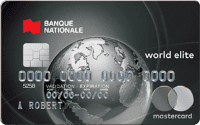



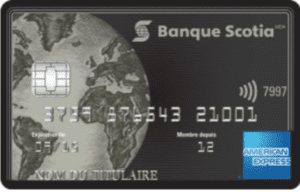


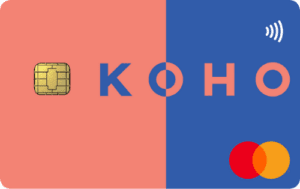





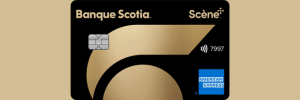





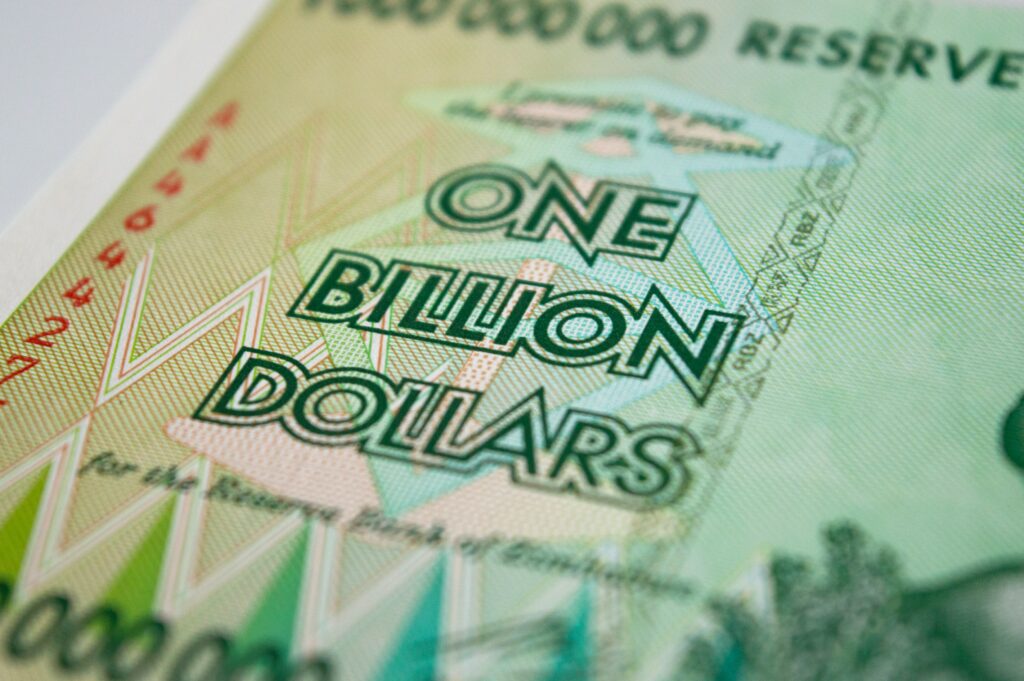


About The Author: Arthur Dubois
Passionate about personal finance and financial technology, Arthur Dubois is a writer and SEO specialist at Hardbacon. Since his arrival in Canada, he’s built his credit score from nothing.
Arthur invests in the stock market but doesn’t pay any fees because he uses National Bank Direct Brokerage online broker and Wealthsimple’s robo-advisor. He pays for his subscriptions online with his KOHO prepaid card, and uses his Tangerine credit card for most of his in-store purchases. When he buys bitcoins, it’s with the BitBuy online platform. Of course it goes without saying that he uses the Hardbacon app so that he can manage all of his finances from one convenient place.
More posts by Arthur Dubois